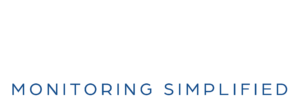Introduction
Power transmission systems are integral to our modern world, ensuring electricity reaches from generation sources to homes, businesses, and industries. The smooth operation of these systems is crucial, and the health of the electrical assets within them is paramount. With ever-growing technological advancements, companies now have sophisticated tools at their disposal to monitor and safeguard these assets. This article delves into the intricacies of power transmission systems, the challenges in asset protection, and how modern electrical asset monitoring software is revolutionizing the way we address these challenges.
Understanding Power Transmission Systems
Power transmission systems form the critical link between electricity generation and consumption. Comprising substations, transformers, and vast transmission lines, they ensure power is effectively and efficiently delivered across vast distances. The assets within these systems are continuously subjected to stress, making their health monitoring vital for system reliability.
The foundation of modern civilization rests on the reliable and efficient transmission of electrical power. Power transmission systems, often referred to as the “backbone” of our electrical infrastructure, play a pivotal role in ensuring that generated electricity reaches consumers, powering everything from households to industries. But what exactly comprises this intricate system, and how do electrical asset monitoring tools come into play?
At its core, a power transmission system is a complex network designed to transport electricity from power plants (where it’s generated) to substations (where it’s distributed for end-use). This system includes various assets such as transmission lines, transformers, and circuit breakers. Each component has a specific role. For instance, transformers adjust voltage levels for efficient transmission, while circuit breakers protect the system from potential faults or overloads.
However, with the vast expanse of these systems, spanning hundreds or even thousands of miles, monitoring the health and performance of each asset becomes a significant challenge. Herein lies the importance of electrical asset monitoring software. These advanced tools provide a holistic view of the entire power transmission system. Using sensors and advanced data analytics, they can continuously monitor asset health, detect anomalies, and predict potential failures. Such capabilities are crucial, especially considering the repercussions of asset failures, from outages to substantial financial losses.
Furthermore, these systems have evolved over the years to accommodate the dynamic nature of power generation and consumption. With the rise of renewable energy sources, such as wind and solar, power transmission systems now have to handle varying power inputs. This variability adds another layer of complexity in ensuring that assets are operating optimally and safely.
Electrical asset monitoring software, equipped with machine learning algorithms and real-time data processing, can adapt to these changing scenarios. They can provide insights into how assets respond to fluctuating power inputs, ensuring that the transmission system remains resilient. Additionally, by integrating with Geographic Information Systems (GIS), these tools can offer spatial insights, aiding engineers and maintenance teams in locating and addressing asset issues swiftly.
In conclusion, understanding power transmission systems isn’t just about recognizing its components. It’s about appreciating the intricacies and challenges involved in its operation. In this complex web, electrical asset monitoring software emerges as a linchpin, ensuring that the “backbone” remains strong, resilient, and efficient.
Challenges in Safeguarding Electrical Assets
From environmental factors to technical failures, electrical assets in transmission systems face a myriad of challenges. Aging infrastructure, external damages, and fluctuating demand patterns can compromise asset integrity, posing threats to the entire transmission system.
In the realm of power transmission systems, safeguarding electrical assets is paramount. While these assets form the “backbone” of our electrical infrastructure, they are not immune to a plethora of challenges that can compromise their integrity and, by extension, the reliability of the entire power transmission network. Recognizing these challenges is the first step in implementing effective asset monitoring solutions tailored to address them.
1. Environmental Threats:
Power transmission assets are constantly exposed to environmental factors. From corrosive coastal air to extreme temperature fluctuations, these elements can accelerate wear and tear. For instance, transmission lines can sag under extreme heat or become ice-laden during winter storms, posing risks of faults.
2. Technical Failures:
Components within the power transmission system, such as transformers and circuit breakers, can experience technical failures. These might be due to manufacturing defects, aging, or operational stresses. Such failures can disrupt power flow, leading to outages or even catastrophic events.
3. External Damages:
Physical damages, be it from natural disasters like hurricanes or human-induced ones like vandalism, can pose immediate threats. For instance, fallen trees can bring down transmission lines, while unauthorized construction near substations can lead to accidents.
4. Fluctuating Demand Patterns:
With the modern grid becoming more dynamic due to the integration of renewable energy sources and the advent of smart grids, assets now face the challenge of handling fluctuating power flows. These variations can stress assets, potentially shortening their lifespan.
5. Aging Infrastructure:
Many power transmission systems in operation today were installed decades ago. Aging infrastructure is more susceptible to failures, requiring more intensive maintenance and monitoring to ensure continued operation.
6. Cybersecurity Threats:
In an era of digitalization, power transmission assets, especially those integrated with modern monitoring systems, are vulnerable to cyber-attacks. A successful breach can not only disrupt power flow but also compromise sensitive data.
Confronted with these challenges, the role of electrical asset monitoring software becomes indispensable. By leveraging real-time data, advanced analytics, and predictive algorithms, these tools can pre-emptively identify potential threats, allowing for timely interventions. Whether it’s scheduling maintenance activities, rerouting power flows, or enhancing cybersecurity protocols, these software solutions ensure that the power transmission system’s “backbone” remains robust against the myriad challenges it faces. The integration of such advanced monitoring tools not only ensures asset longevity but also fortifies the reliability and resilience of the entire power transmission network.
Technological Innovations in Asset Monitoring
Modern electrical asset monitoring software offers real-time insights, using advanced sensors and AI algorithms. These systems detect anomalies, predict failures, and provide actionable data, ensuring timely interventions and optimal asset health.
The arena of power transmission has witnessed rapid advancements in recent decades. While the primary objective remains unchanged – the reliable transfer of electrical power – the methods employed to ensure this reliability have evolved dramatically, primarily due to technological innovations in asset monitoring. As the “backbone” of our electrical infrastructure, the power transmission system benefits immensely from these advancements, ensuring not only efficiency but also pre-emptive identification of potential issues.
1. Sensor Technology: Modern sensors, capable of capturing real-time data on various parameters like temperature, vibration, and current flow, have become integral to asset monitoring. These sensors, embedded directly into assets or strategically placed around them, provide a continuous stream of data, ensuring immediate detection of anomalies.
2. Predictive Maintenance: With the integration of machine learning and artificial intelligence, electrical asset monitoring software can now predict potential failures based on historical and real-time data. This allows for timely interventions, reducing unplanned outages and extending asset lifespan.
3. Remote Monitoring: Advancements in communication technologies have enabled remote monitoring of assets. Engineers and technicians can now oversee the health and performance of assets from centralized control rooms, reducing the need for on-site inspections and ensuring immediate response to potential threats.
4. Integration with GIS: Geographic Information Systems (GIS) provide spatial insights, crucial for assets spread across vast geographical areas. By integrating asset monitoring tools with GIS, operators can swiftly locate issues and deploy necessary resources for rectification.
5. Digital Twins: This innovative concept involves creating a digital replica of physical assets. By simulating the real-world conditions and operations on this digital twin, operators can predict how assets will respond to various scenarios, aiding in decision-making and planning.
6. Enhanced Cybersecurity: With the power transmission system becoming increasingly digitized, there’s an elevated risk of cyber threats. Modern asset monitoring tools come equipped with robust cybersecurity measures, ensuring that both data and operations remain shielded from potential breaches.
In conclusion, the technological innovations in asset monitoring have transformed the way power transmission systems are managed. By harnessing these advancements, operators can ensure that the “backbone” of our electrical infrastructure remains resilient, efficient, and future-ready. Electrical asset monitoring software, with its array of features powered by these innovations, emerges as a cornerstone in safeguarding and optimizing power transmission systems. It is no longer just a tool for monitoring but a comprehensive solution ensuring the longevity and reliability of the power transmission network.
Best Practices in Asset Management for Power Transmission
Routine inspections, predictive maintenance, and leveraging advanced monitoring systems are industry-standard practices. By understanding the unique demands of each asset within the transmission system, companies can adopt strategies ensuring longevity and efficient performance.
The reliability and efficiency of a power transmission system, often termed the “backbone” of our electrical infrastructure, hinge on the meticulous management of its assets. As the electrical grid grows in complexity and scale, incorporating best practices in asset management becomes paramount. These practices, bolstered by modern electrical asset monitoring software, ensure the prolonged health and optimal performance of the assets.
1. Routine Inspections and Maintenance: Regularly scheduled inspections are vital. Through these, minor issues can be identified and rectified before they escalate into major problems. Maintenance activities, based on the data from these inspections, can extend the life of assets and prevent unexpected breakdowns.
2. Data-Driven Decisions: Modern power transmission systems generate vast amounts of data. By analyzing this data using advanced asset monitoring software, operators can make informed decisions, from scheduling maintenance to optimizing asset performance.
3. Asset Lifecycle Management: Understanding the entire lifecycle of an asset, from procurement to decommissioning, allows for strategic planning. This includes budgeting for replacements, upgrades, and ensuring that assets operate at peak efficiency throughout their lifespan.
4. Training and Skill Development: As technologies evolve, it’s crucial that the personnel managing these assets stay updated. Regular training sessions ensure that they are equipped with the latest knowledge and skills to manage the assets effectively.
5. Disaster Recovery and Contingency Planning: Power transmission systems are vulnerable to natural and man-made disasters. Having a robust disaster recovery plan, coupled with a contingency strategy, ensures minimal disruptions and swift restoration of services.
6. Integration with Modern Technologies: Incorporating technologies like IoT, machine learning, and artificial intelligence can significantly enhance asset monitoring. These technologies can predict failures, optimize asset performance, and provide real-time insights, strengthening the “backbone” of the power transmission system.
In the realm of power transmission, where assets are geographically dispersed and are subjected to various operational stresses, these best practices become the guiding principles. Electrical asset monitoring software, with its capabilities to provide real-time data, predictive analytics, and integration with modern technologies, plays a pivotal role in realizing these best practices. For companies aiming to safeguard their power transmission assets, embracing these practices and leveraging the capabilities of modern monitoring software is not just a recommendation but a necessity. Ensuring the health and longevity of assets within the power transmission system ultimately guarantees the reliability and resilience of our electrical infrastructure.
The Future: Strengthening the Backbone for Tomorrow
The integration of renewables, the rise of smart grids, and continuous research point towards a robust future for power transmission systems. Innovations in electrical asset monitoring software promise to further enhance asset health management, ensuring uninterrupted power flow for the future.
The realm of power transmission systems, often perceived as the “backbone” of our electrical infrastructure, is on the cusp of a transformative era. Advancements in technology, coupled with rising demands for renewable energy integration and distributed energy resources, have set the stage for a future that promises to redefine how we view and manage our power grids. Amidst these evolutions, electrical asset monitoring software stands out as a pivotal tool, empowering operators and stakeholders to ensure the health and longevity of their assets.
1. Grid Modernization: As the call for smart grids intensifies, power transmission systems will inevitably become more interconnected and intelligent. Leveraging data analytics, AI, and machine learning, these smart grids will ensure efficient power distribution, minimized losses, and optimized asset performance.
2. Integration of Renewable Energy: The push for sustainable energy solutions is prompting the integration of solar, wind, and other renewable sources into the grid. Electrical asset monitoring software will play an instrumental role in managing these integrations, ensuring stability and reliability.
3. Distributed Energy Resources (DER): As the adoption of DERs like battery storage and microgrids becomes mainstream, the traditional centralized power transmission model is set for disruption. Asset monitoring software will be pivotal in coordinating these resources and ensuring seamless power transmission.
4. Advanced Predictive Maintenance: The future of asset management lies in predicting failures before they occur. With advancements in sensor technology and data analytics, asset monitoring software will provide real-time insights, enabling proactive maintenance measures.
5. Cybersecurity and Grid Protection: As grids become smarter, they also become susceptible to cyber threats. Strengthening the “backbone” will entail robust cybersecurity measures, ensuring the grid’s protection against potential attacks.
6. Enhanced Resilience against Natural Calamities: Climate change poses unpredictable challenges. The future will see power transmission systems designed with heightened resilience against natural disasters, backed by monitoring software that can quickly identify and rectify issues.
In essence, the future of power transmission systems envisions a grid that is intelligent, resilient, and efficient. Electrical asset monitoring software, with its capabilities to harness data and provide actionable insights, is poised to be a cornerstone in this transformative journey. For stakeholders, embracing these emerging trends and aligning their strategies with the future landscape will be critical. The aim remains clear: to strengthen the “backbone” of our electrical infrastructure, ensuring it is equipped to serve the demands of tomorrow.
Conclusion
Power transmission systems are the lifelines of our modern society, and the assets within them are its backbone. Ensuring their health and longevity is not just a technical requirement but a societal one. With the challenges these assets face, the role of electrical asset monitoring software becomes invaluable. By offering real-time insights, predictive analytics, and a comprehensive view of asset health, these tools empower companies to make informed decisions. As we look towards the future, with its promise of technological advancements and an ever-growing demand for electricity, strengthening and safeguarding our power transmission system assets becomes not just a goal but a necessity. The future of power transmission is bright, and with the right tools and practices, we can ensure it remains resilient and robust.
References:
– [Wikipedia: Electric power transmission](https://en.wikipedia.org/wiki/Electric_power_transmission)
– [Electrical Easy: Basics of electrical power transmission](https://www.electricaleasy.com/2016/03/basics-of-electrical-power-transmission.html)
– [Electrical4U: Electrical Power Transmission System and Network](https://www.electrical4u.com/electrical-power-transmission-system-and-network/)
– [CPUC: Electric Transmission Fact Sheet](https://ia.cpuc.ca.gov/Environment/info/aspen/cltp/archive/Files_8_26_14/_2ElectricTransmissionFactSheet.pdf)



